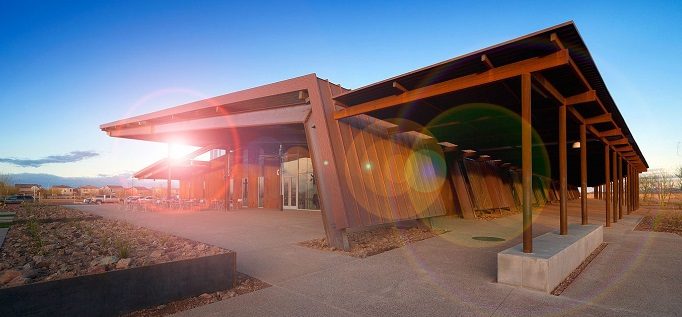Improving the student experience
By Jenni Cardenas
March 12, 2019
Central Arizona College took a three-pronged approach to better serving students.
Central Arizona College’s (CAC) mission is to serve as a true learning community by empowering our students and staff to succeed. Even with dropping student enrollments, the goals laid out in Arizona’s strategic vision for community colleges have helped schools recreate developmental programs, align curriculum with high schools and other universities, and streamline pathways to degree completion. CAC’s specific goals over the past two years have included improving student services through innovation and transformation even in the face of unprecedented challenge and change.
A focus on guided pathways
Prior to our initiative to improve student services, we took a look at our students and thought how can we better serve you? Instead of saying students need to be prepared for CAC – we need to prepare for students. Adopting AACC’s Guided Pathways model, we realized the need to shift from asking students to be “college ready” to asking ourselves how we can be more “student ready”. This can only occur through a systematic change and transforming from the student perspective. Simply tweaking current processes and services does not work.
Under the governance of faculty and academic leadership, the exploration and implementation of the Guided Pathways model allowed CAC to redefine the student experience offering a clearer pathway from school to employment. This includes eight areas of interest, such as industrial technology and skilled trades, nursing health and emergency careers, designed to assist students in attaining a credential over a shortened time and increase their chances for graduation and transfer. We chose this approach to address the overabundance of credits students had been earning as well as the additional money spent on excess credits.
In order to become “student ready”, we shifted our focus in academic advising away from schedule building – an important task but one that our new student information system could accomplish, to a career focus. The career focus has helped the advisor create a deeper connection with the student, further tethering them to the college. Advisors can now sit with students and maximize their time together to help a student determine their career path. In addition, with the eight new areas of interest, the advisor can hone in on specific paths within a discipline, which allow the student to explore new skills.
Shifting culture for efficient communication
With Guided Pathways and a renewed focus on utilizing technology to support the transformation process, CAC also made a committed effort to completely shift our culture. Change can be difficult when departments have been following the same processes for decades, but we recognized that a change was critical for the success of our students. We needed to strategically make student experience goal-oriented versus process-oriented and develop strong connections. Involving students early on and empowering them to be part of the transformation was important for ensuring student success through retention, persistence, completion and transfer.
One priority was giving student access to all of the information they might possibly need – admission requirements, academic advising, financial aid and more – through a functional one stop. Previously, several different administrative personnel helped students from the beginning to the end of their academic experience without a warm handoff to the next department. This was inefficient and time consuming. After evaluating our processes, we made changes to the roles and responsibilities of our staff to reduce the amount of staff students needed to speak to regarding administrative tasks and advising. We want students to be able to go to fewer staff members and be able to ask any questions and attain all of the information they need. Also, we wanted to break down the silos of individual departments and work more as a team. As we continue to focus on becoming “student ready,” we are exploring moving our advisors into specific academic departments versus the current model where our advisors sit together in one stand-alone department.
Deploying technology to ease the transformation
Transforming our technology processes has helped us meet many of our transformative objectives at CAC. Fairly quickly, we realized that our legacy system could not meet all of the new needs to ensure our transformation was successful and adding additional components such as degree audit to the existing system was not a feasible solution. So, as we added campuses and looked to the future, it became clear that the current system wasn’t going to work. The other issue was the changing higher education landscape. Enrollment for most institutions is down and additional competing online systems have emerged.
A newly integrated SIS, ERP and CRM by Campus Management has given CAC a view of every department’s interactions with students supporting enrollment, retention and placement results. A modern CRM platform will help our recruitment department improve engagement and a new degree audit system will allow advisers and students to track academic progress throughout their journey.
Optimizing and allocating resources and student services across the community college system requires having a comprehensive, real-time and accurate view of student and operational needs. Our new platform is an integrated solution that was built with the student in mind and benefits the collective faculty, staff, and student community throughout the region and will help us achieve our long-term goals and vision.



